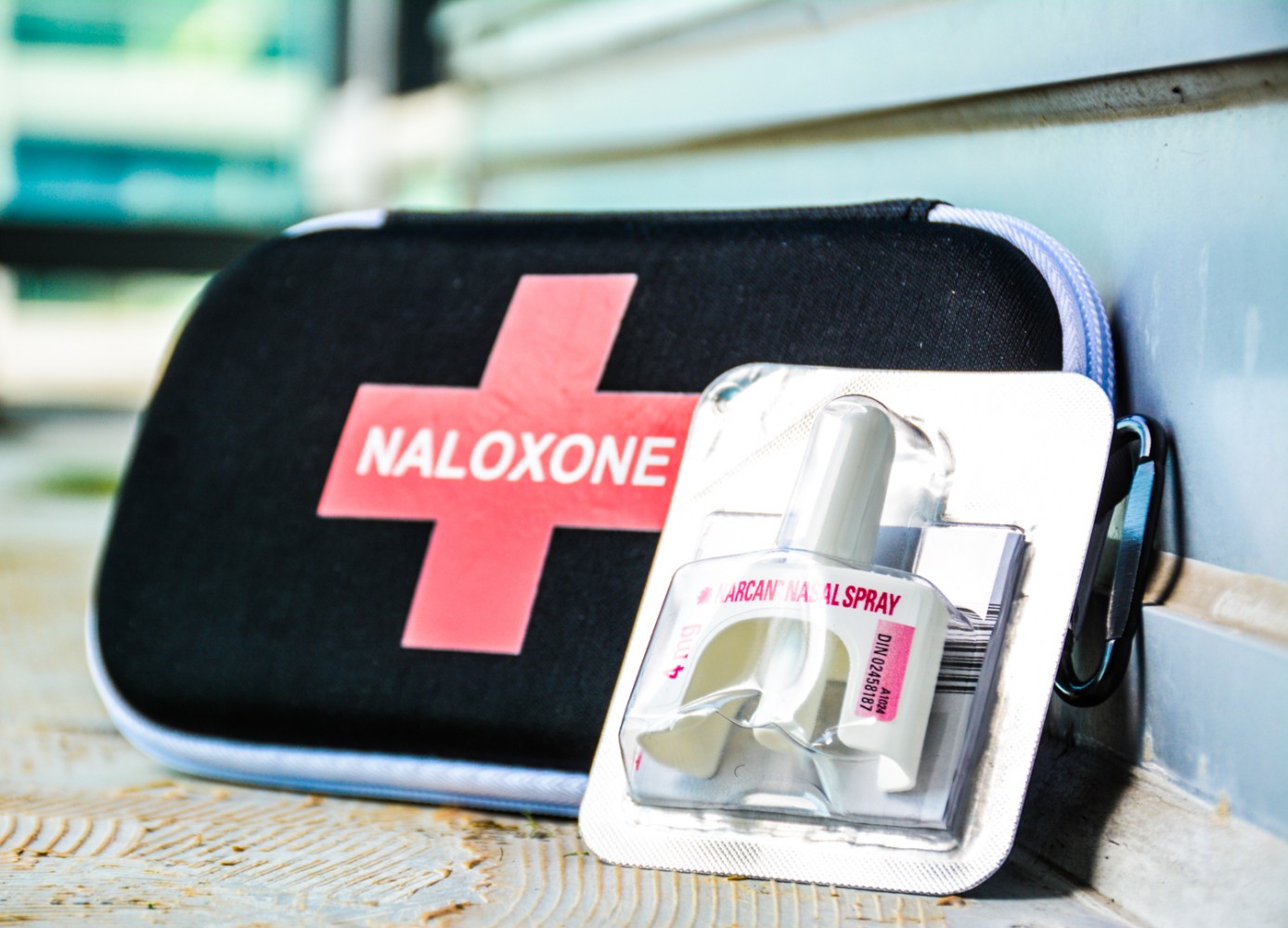
Surge in fentanyl-related deaths in Peel adds urgency to calls for public health funding
Ten years ago, fentanyl was nonexistent on the streets of Peel Region. Now, it’s one of the most deadly substances changing hands on the local black market.
A shocking rise in overdoses of powerful opioids has stunned jurisdictions across Ontario and the country, and Peel is no exception. A variety of efforts have been put in place to battle the rising tide of deaths.
According to data from Public Health Ontario, fentanyl was not responsible for a single overdose death in Peel in 2006. Overdose deaths involved drugs like codeine, oxycodone, morphine and methadone.
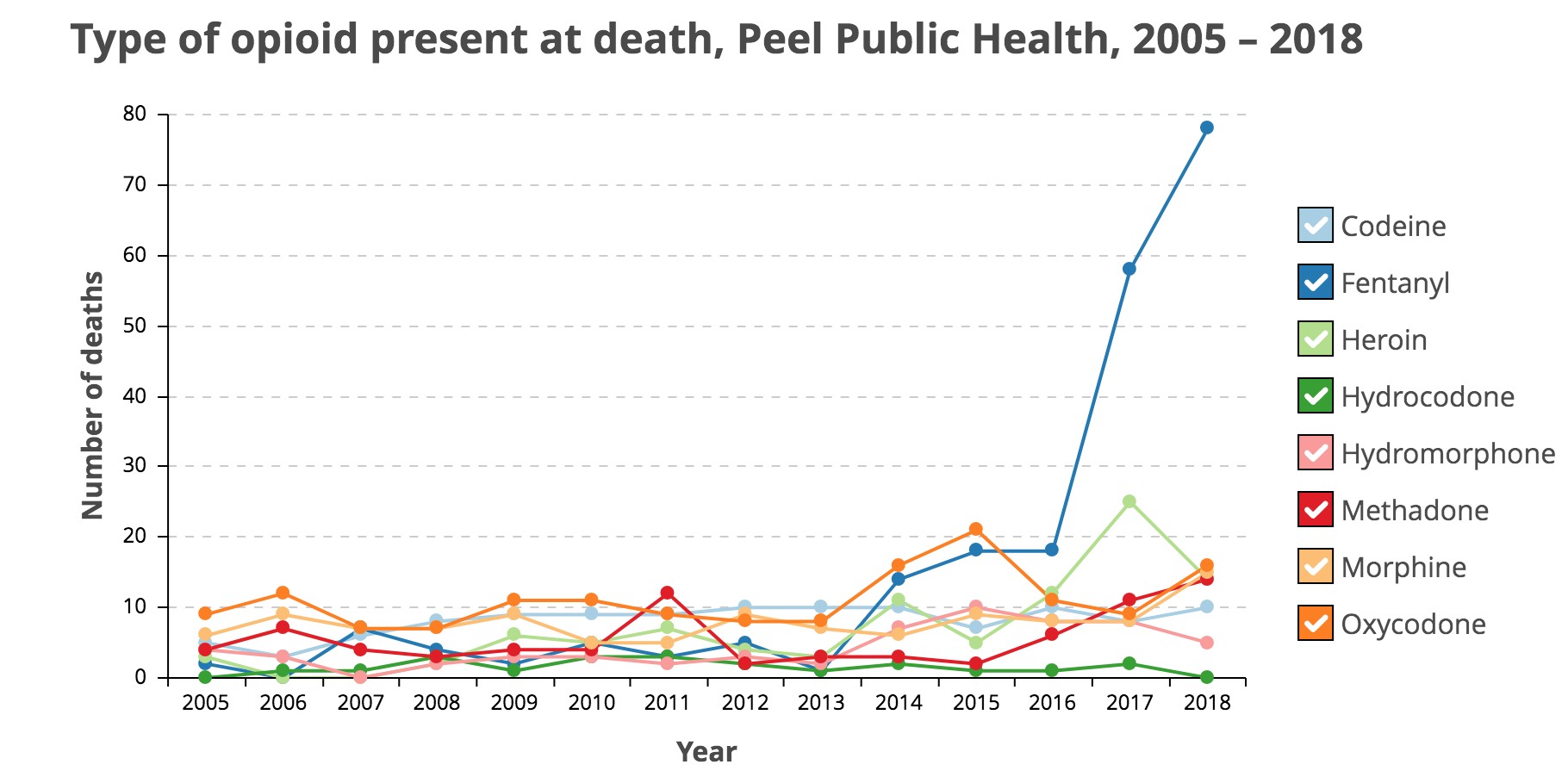
Since that time, Peel has evolved into one of the deadliest regions for fentanyl-related deaths in Ontario, with Peel Public Health recording 58 overdoses involving the drug in 2017, behind only Waterloo, with 67 deaths, and Toronto, with 218. The Simcoe Muskoka District Health Unit also recorded 58 overdoses involving fentanyl that year.
“The landscape has changed so much, so quickly,” according to advance practice clinical leader Maria Zhang, with the Centre of Addiction and Mental Health (CAMH). In a press release, she cites “the advent of clandestine labs that manufacture very potent drugs that seem to come out of nowhere. The competition between dealers and suppliers to produce the next best thing puts everyone at risk.”
It’s what makes fentanyl particularly nefarious. A drug that is already 50 to 100 times more potent than morphine, taken unknowingly, can easily trigger an overdose.
The rise in such incidents was the impetus for Ontario and jurisdictions across Canada to initiate widespread distribution of naloxone nasal-spray kits. The spray effectively reverses an overdose temporarily, blocking the brain’s opioid receptors and allowing the person an opportunity to get to a hospital.
Despite these and other harm-reduction programs, the death toll has continued to rise.
Since 2003, deaths caused by opioids overall have risen by 246 per cent. In 2017, more than 1,250 Ontarians died from opioid-related causes.
In Peel, between 2005 and 2013, the number of opioid-related deaths has remained steady, averaging about 26 per year. There were spikes in 2014, which saw 45 deaths, and in 2017, with 81 deaths.
In the majority of these cases, fentanyl is involved. According to data from the region related to the most recent opioid-related deaths between May 2017 and December 2018, fentanyl was present in 71 percent of cases, compared to heroin (17 percent), morphine (11 percent) and oxycodone (9 percent).
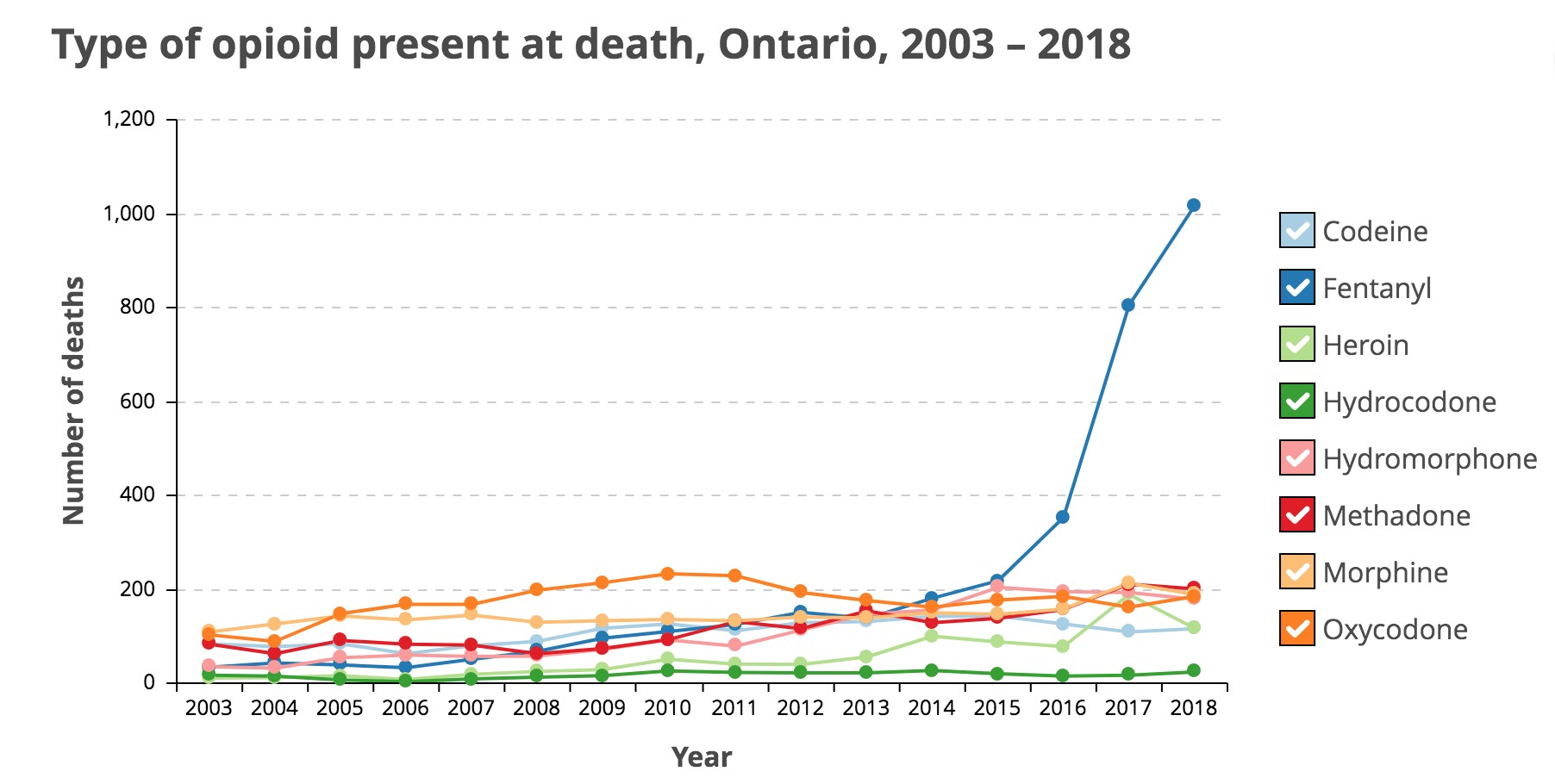
Dr. Laura Bourns, an associate medical officer of health for the Region of Peel, explains that the region has been steadily battling these rising numbers, in part by bringing organizations together to get a firmer grasp on the situation.
“The Region of Peel has convened an Opioids Strategy Steering Group composed of members from various community organizations, including Peel Regional Paramedic Services, Municipal Fire and Emergency Services, Peel Regional Police, Caledon OPP, Punjabi Community Health Services, Dufferin Peel Catholic District School Board, (and) Peel District School Board,” Bourns tells The Pointer.
And that’s not all: also involved are the John Howard Society, Elizabeth Fry Society Peel-Halton, Peel Children’s Centre, Canadian Mental Health Association Peel Dufferin, Peel Addiction Assessment and Referral Centre, Wellfort Community Health Services, Moyo Community and Health Services, the University of Toronto, Sheridan College, Ontario Addiction and Treatment Centre-Brampton, and the local LHINs.
“This group meets regularly to plan strategies to prevent and reduce harms related to opioid use in Peel,” Bourns says. “Peel Public Health has established a surveillance process to regularly monitor and share information related to opioid overdoses with community stakeholders to inform programs, services, and interventions.”
The Peel Public Health unit conducts a variety of harm-reduction programs (naloxone, safe injection kits, and training through community partners), and its mobile vans travel the region to areas most in need. In 2018, Public Health distributed more than 500,000 sterile needles (along with educational materials), 892 naloxone kits, and more than 10,000 safer inhalation kits.
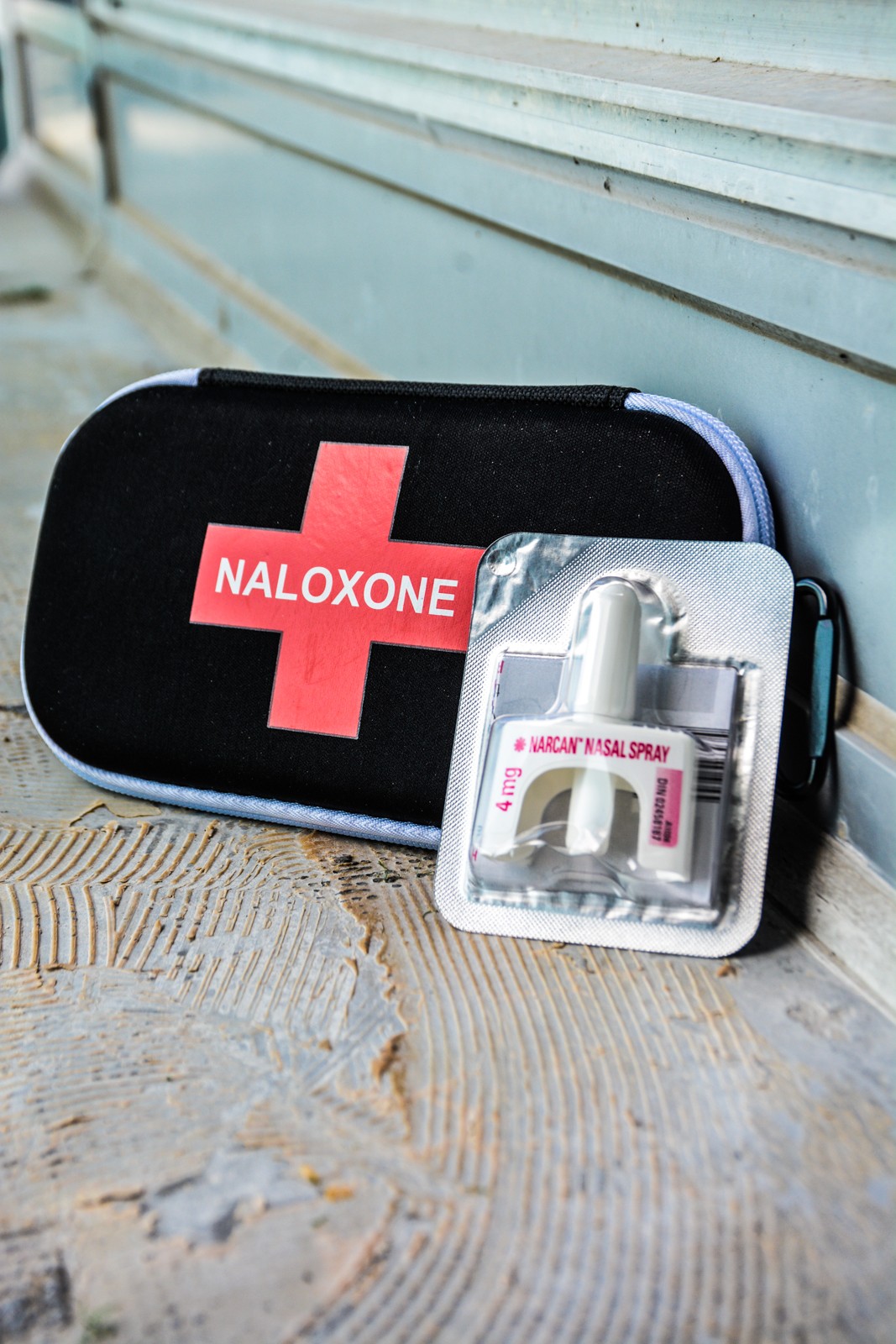
The Region of Peel handed out nearly 900 naloxone kits in 2018. The nasal spray works to temporarily reverse an opioid overdose by blocking receptors in the brain.
Yet the tide keeps rising. While public health units across the province grapple with the changing nature of street drugs, hospitals, already filled to bursting, are feeling the pressure from opioid-related visits.
According to data from Peel Public Health, the region saw 496 emergency department (ED) visits related to opioids in 2017, the latest year for which complete data is available. This not only represents an unsettling 96 percent increase over 2016 (with 253 ED visits) but also a shocking 520 percent increase from 2003. Through the first nine months of 2018, Peel emergency departments had 254 visits related to opioids.
Hospitalizations and deaths also increased dramatically. The number of people admitted to hospital for opioid use increased 35 percent between 2016 and 2017 (up 89 percent from 2003), and the number of deaths from opioid overdoses increased from 23 in 2005 to 81 in 2017, a 252 percent increase.
The mantra of doing “more with less” has permeated municipal thinking over the past decade. While that’s intended to create a leaner system and leave a smaller impact on the taxpayers’ wallet, the consequences of thinning budgets can be dire in the area of healthcare and prevention.
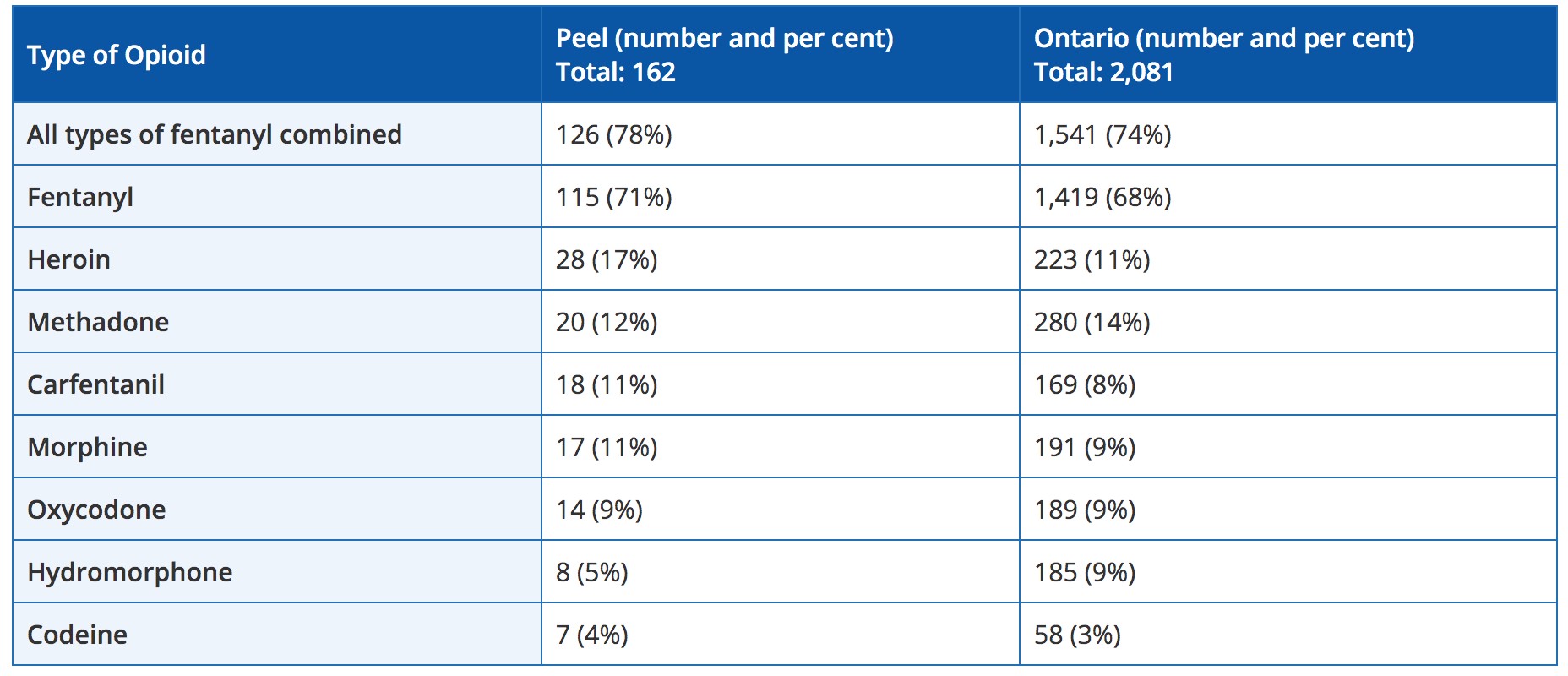
Opioids present in Peel/Ontario overdoses betweeen May 2017 and December 2018.
This was apparently lost on Premier Doug Ford and his PC government this past April, when the 2019 budget introduced sweeping cuts to public health units across the province.
The move drew strong backlash, prompting damage-control efforts at Queen’s Park. Initially, it was announced that cuts that would have cost the public health units millions of dollars would be retroactive, meaning they would affect the current year’s budget. Following the uproar, the cuts were pushed to 2020. Speaking at the recent Association of Municipalities of Ontario (AMO) conference in Ottawa, Ford confirmed the cuts will move ahead next year.
The most recent numbers from the province show an increase in funding for Peel Public Health this year. In total, Peel is getting just over $58 million for public health programs, up from its 2018 allocation of $54.1 million. The region is also receiving a one-time grant of almost $30,000 for a needle exchange program.
These numbers are far from the full picture, as Peel has been underfunded for years compared to many other parts of the province, forcing Public Health to take on new challenges such as the opioid crisis, and the rising impact of deadlier drugs like fentanyl, with effectively the same budget.
In the past, most of the 35 health units in Ontario relied on the provincial government for about 75 percent of their funding, while local municipalities made up the remaining 25 percent. Under the new plans announced by Health Minister Christine Elliott, municipalities will now be responsible for coming up with 30 percent of their public health budgets.
This would be nothing new in Peel Region, where the provincial contribution typically accounts for only 63 percent of the unit’s budget, with the regional municipalities making up the remaining 37 percent.
In 2013, a review completed by public sector health representatives, studying three years’ worth of funding data, laid out the discrepancies in public health funding.
Peel, with its fast-growing population, was at the bottom of the list, with per capita funding of only $29.83, the lowest of all health units in Ontario.
“Provincial funding received is currently insufficient to meet the Ontario Public Health Standards in full, and as a result, Public Health prioritizes its efforts and activities towards those areas of greatest need as identified through health status data,” the region’s budget document explains. “Council is advised when there are significant risks in not meeting the standards. The 2019 Budget assumptions for provincial funding recognize that in some programs the level of funding falls short of prescribed formulas and/or does not recognize the needs of a growing population. Funding to cover inflation has been assumed for the 2019 Budget but there is significant risk that the payment will not be provided, which will impact service levels.”
With a public health unit stretched thin, and a local hospital system that is also one of the lowest funded in the province, the combination puts Peel residents at particular risk.
Asked by The Pointer how Peel’s public health unit can be expected to adequately address the opioid crisis with a chronically underfunded budget, Bourns noted that the situation requires Peel to lean on community partners for assistance.
“Preventing and reducing harms related to opioid use in Peel is a goal that requires a multisector, collaborative response. That is why we are working with our cross-sector partners on a strategy that includes prevention, harm reduction, treatment and enforcement,” she explains. “Commitment from and investment in all sectors are required to support an effective response and long-term strategies to address the current opioid crisis.”
Peel’s medical officer of health, Jessica Hopkins, has reached out to the region’s MPPs to make sure they’re aware of the severity of the crisis in Peel.

Jessica Hopkins, Peel’s medical officer of health
“These meetings were an opportunity for the Medical Officer of Health to discuss public health priorities and key issues in Peel, including substance use and the current opioid crisis,” Bourns said.
Aside from an announcement in May of a $2.3 million grant for harm-reduction efforts to the Canadian Mental Health Association (CMHA) Peel-Dufferin, it’s not clear what other investments the province has made to assist Peel directly. In 2017, the former Liberal government pledged $222 million over three years to support overdose prevention initiatives, but it’s also not clear where that funding stands now.
Surprisingly, the Region of Peel says it has not applied directly for any funding from higher levels of government to support programs battling opioids, or more specifically the rising presence of fentanyl, but instead has thrown its backing behind the applications of community groups.
“Peel Public Health has supported community organizations in applying for related funding, such as grants from the Public Health Agency of Canada that are targeted to front-line community-based projects,” Bourns says.
The region is currently developing a comprehensive drug strategy that would address myriad issues related to substance abuse, not just opioids. With such strategies come recommendations and a call for action. When it’s time to actually implement the strategy, it’s unclear how Peel’s public health budget will manage.
“As part of annual budget planning, Peel Public Health will consider the various public health issues in Peel and existing services and programs,” Bourns says. “This includes consideration of the programs and services needed to help address the current opioid crisis. Funding allocation and distribution across programs and services will be made accordingly to stay within available funding.”
Email: [email protected]
Twitter: @JoeljWittnebel
Submit a correction about this story


